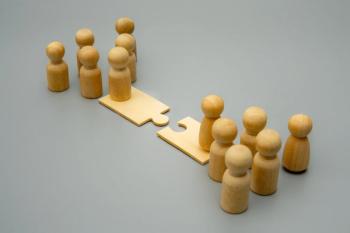
It’s Not Easy Being Yellow
“There are things that I think an Asian therapist would just understand… Maybe with them I can just be a normal person.”
During the most recent Asian American (AA) affinity group that I facilitated, a second-generation Chinese-American college student brought up the challenges she has had in finding an AA therapist. While she has had a positive experience with a white therapist in the past, she explained, “There are things that I think an Asian therapist would just understand, like stuff about culture, race, and family issues that I would not have to explain. Maybe with them I can just be a normal person.”
This sentiment and desire to see a provider of the same racial/ethnic background is common for many people of color (POC), particularly if they have a stronger identification with their minoritized identity.1 It is a phenomenon that I have witnessed both in clinical practice in multiple settings, and have also experienced personally in searching for an AA therapist myself. This student’s comment invoked a complex discussion in the group where many shared about the burden of feeling caught between 2 dichotomous realities. Participants connected over often feeling both exposed and “othered” as a POC in our white dominant society, yet invisible and overlooked in conversations about race that tend to remain Black versus white. We discussed the conflict of being both a “
The Inheritance of Racialized Identities
With so many contradictions on top of the already complicated journey for young adults to navigate their identities and make sense of the world, it is no wonder AA youth are desperate to feel seen, understood, safe, and held. It may also surprise few that AAs experience significant rates of depression and
As Isabel Wilkerson poetically described in her book, Caste; the Origins of Our Discontents: “America is like an old house…We… are like homeowners who inherited a house on a piece of land that is beautiful on the outside, but whose soil is unstable loam and rock… Many people may rightly say, ‘I had nothing to do with how this all started. I have nothing to do with the sins of the past...' And, yes. Not one of us was here when this house was built… but here we are, the current occupants of a property with stress cracks and bowed walls and fissures built into the foundation. We are the heirs to whatever is right or wrong with it. We did not erect the uneven pillars or joists, but they are ours to deal with now.”6 Due to the inheritance of our racialized identities, these histories seep into the treatment room and the dyad, and impact the experience of a patient of color under the white gaze, often in a way that goes beyond the level of whatever intervention the therapist is implementing individually or interpersonally.
It is important to understand that racial identity—separate from identities related to ethnicity, culture, and nationality—is assigned by those in the system who have power; it is an identity that is enforced upon us. The AA identity is at heart a political construction born in the late 1960s to describe how AAs, with our manifold differences in home countries, cultures, languages, ethnicities, and backgrounds are all joined by how we are racialized in this society, and what happens to us with that racialization.7 While modern psychiatric training has more and more widely incorporated cultural modules,
In their book, Racial Melancholia, Racial Dissociation, David Eng and Shinhee Han link psychoanalysis with larger historical and political theories to explore the psychic and social lives of AAs. They describe “racial melancholia,” drawing from Freud's theory of unresolved grief to analyze “the sustained losses attendant to the processes of
A Therapeutic Framework
AA mental health struggles are often talked about in terms of stigma in the community, familial communication issues, struggles with assimilation or integrating Eastern and Western values, and “tiger parenting” putting too much pressure on AA youth. Rarely is the history of and current manifestations of racialization, exploitation, exclusion, and oppression of AAs discussed as factors in their mental health. As Lisa Lowe writes in Immigrant Acts9:
“…interpreting AA culture exclusively in terms of the master narratives of generational conflict and filial relation essentializes AA culture, obscuring the particularities… of class, gender, and national diversities among Asians. The reduction of the cultural politics of racialized ethnic groups, like AAs, to first-generation/second-generation struggles displaces social differences into a privatized familial opposition. Such reductions contribute to the aestheticizing commodification of AA cultural differences, while denying the immigrant histories of material exclusion and differentiation.”
A therapeutic framework that attributes AA suffering to cultural differences or intergenerational conflict may not only fail to treat but may risk perpetuating further invalidation,
Jose Rizal, Filipino activist is credited with the phrase, “No history, no self. Know history, know self,” referencing that knowing where one comes from gives one grounding in discovering self-context, history, identity, and sense of self. Many participants in AAPI student affinity groups I have led over the past few years have shared how having our history and representation erased and excluded in school textbooks, media, and positions of leadership impacts our sense of self and identity. This then extends to erasure and dissociation within our families, communities, and ourselves.
It was with feelings of great awe and fascination, as well as grief and loss, that I recently watched “Far East, Deep South,” a documentary on a Chinese-American family’s search of their lost history in rural Mississippi.10 They discover how exclusionary immigration laws impacted their family and how deep Chinese immigrant roots run in America—as early as the 1800s. Producer Baldwin Chiu was present and proudly donned a T-shirt stating, “Asian American history is American history.” It was both painful and healing to be reminded that as “othered” and excluded as AAs may be made to feel, and in spite of the systemic racism and oppression they have endured, AAs share a long history in this country. They have contributed to its foundation, surviving against these odds due to their capacity to build community with mutual aid, organization, and unrelenting resistance.7
It can be daunting to consider what kind of action to take in the face of deep-seated issues of such magnitude and number. Drawing from the work of Frantz Fanon, Ignacio Martín-Baró, Paulo Freire, and more, liberation psychology offers a useful framework to describe how forms of sociopolitical oppression lead to suffering, and how to move toward a conceptualization of radical healing from the trauma of
Concluding Thoughts
As I am brought back to that student’s comment in our group, wanting to be a “normal person” in the eyes of her therapist, it resonates deeply with me the desire to just be. I believe that this work of understanding our histories and racialized identities is extremely important. I believe that moving past thinking primarily about cultural differences and community stigma, and really critically reflecting on the broader historical and political impacts on our psyches and our relations, is necessary. It would be dishonest for me to deny that this work can be burdensome, grueling, and depleting; at the same time, it has been powerful, uplifting, and life changing. I have met individuals from all racial backgrounds, ethnicities, sexual and gender orientations, and age groups that have shown compassion and allyship.
I recently attended the inaugural meeting for The Asian American Center for Psychoanalysis12 and shared in a beautiful experience of community building and collective healing where many expressed their relief and gratitude that they could safely feel “in their own skin”—a rare occasion. I am also heartened by recent pieces of art, such as the award-winning film, “Everything Everywhere All at Once,” breaking the mold as a film that is simultaneously a family drama, diaspora story, mother-daughter repair, martial arts flick, queer love story, and raunchy sci-fi comedy that shatters every AA stereotype. As author R.F. Kuang writes in her review, it is “a film that, for once, does not treat hybridity from the outset as a problem that needs solving… neither tortures the protagonist with choosing which country to which to cast their allegiance, nor seeks catharsis in either successful assimilation or some authentic reunification with the motherland.”13
My hope is that one day we can all get to a place where as AAs, the conflicts that arise from the identities we hold are not problems that need solving, but experiences in which we can comfortably, safely, and unapologetically be. I have optimism and radical hope that we are moving in the right direction, as fraught as the journey is. As the award-winning actress Sandra Oh, proudly proclaimed, for all those that need to hear it, “it is an honor just to be Asian.”
Dr Han is a psychiatrist at Harvard University Health Services and Mass General Hospital.
References
1. Swift JK, Callahan JL, Tompkins KA, et al.
2. Chou S, Han C, Ouyang JX, Yan Li AS.
3. Huynh QL, Devos T, Smalarz L.
4. Lee M, Bhimla A, Lu W, Ma GX.
5. Shaligram D, Chan V, Han C, et al. Moving the needle on Asian American and Pacific Islander hate: disarming discrimination and capturing belonging as mental health providers. AACAP. October 20, 2022. Accessed June 5, 2023.
6. Wilkerson I. Caste: The Origins of Our Discontents. Thorndike Press; 2021.
7. Wu JYW. Know History, know self: to be grounded in our critical histories. Let’s Talk! Professional Conference. 2021. Accessed June 5, 2023.
8. Eng DL, Han S. Racial Melancholia, Racial Dissociation: On the Social and Psychic Lives of Asian Americans. Duke University Press; 2019.
9. Lowe L. Immigrant Acts: On Asian American Cultural Politics. Duke University Press; 1996.
10. Chiu B, Lam L. Far East Deep South. DVD. PBS; 2021.
11. French BH, Lewis JA, Mosley DV, et al. Toward a psychological framework of radical healing in communities of color. Counseling Psychologist. 2020;48(1):14-46.
12. Centering Asian Americans in psychoanalytic thinking, writing, and practice. The Asian American Center for Psychoanalysis. May 18, 2023. Accessed June 5, 2023.
13. Kuang RF. Everything Everywhere All At Once is the non-diaspora diaspora story we’ve been waiting for. Tor. April 26, 2022. Accessed June 5, 2023.
Newsletter
Receive trusted psychiatric news, expert analysis, and clinical insights — subscribe today to support your practice and your patients.

















